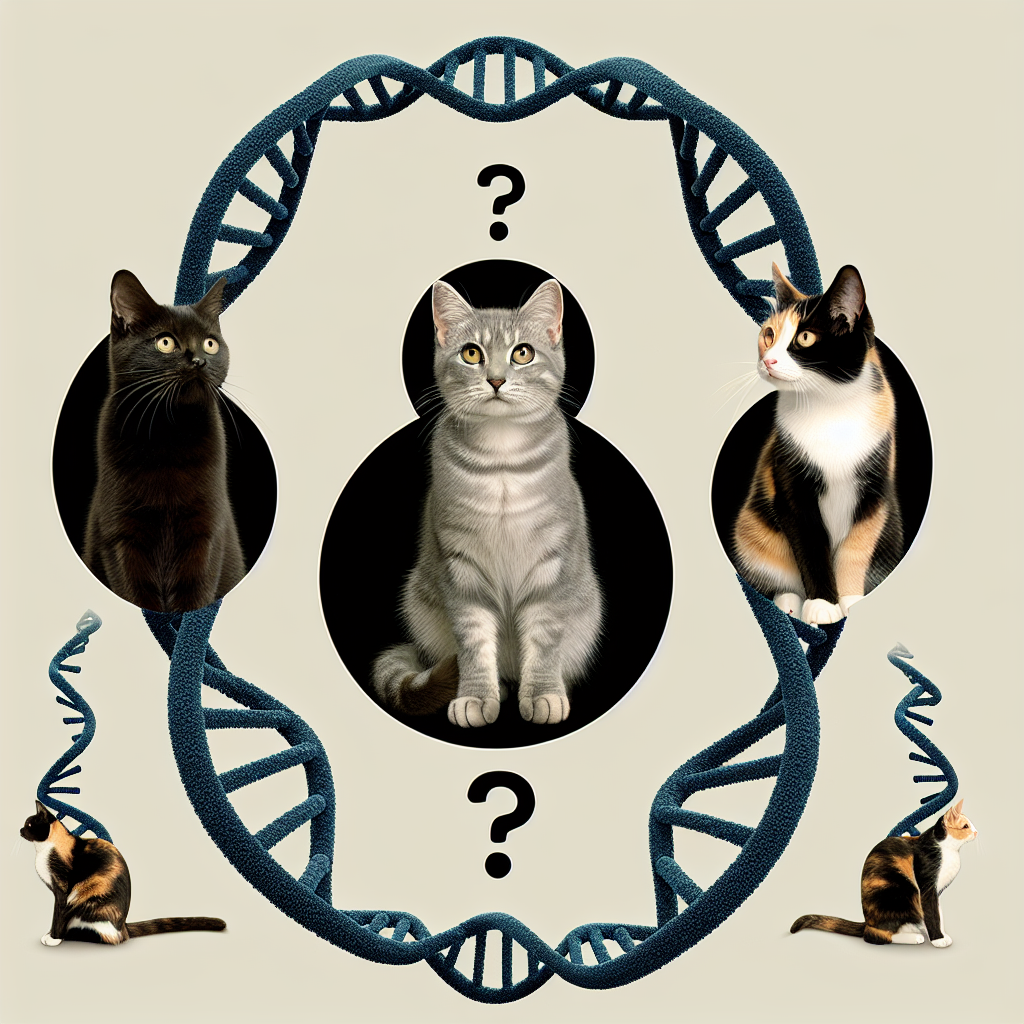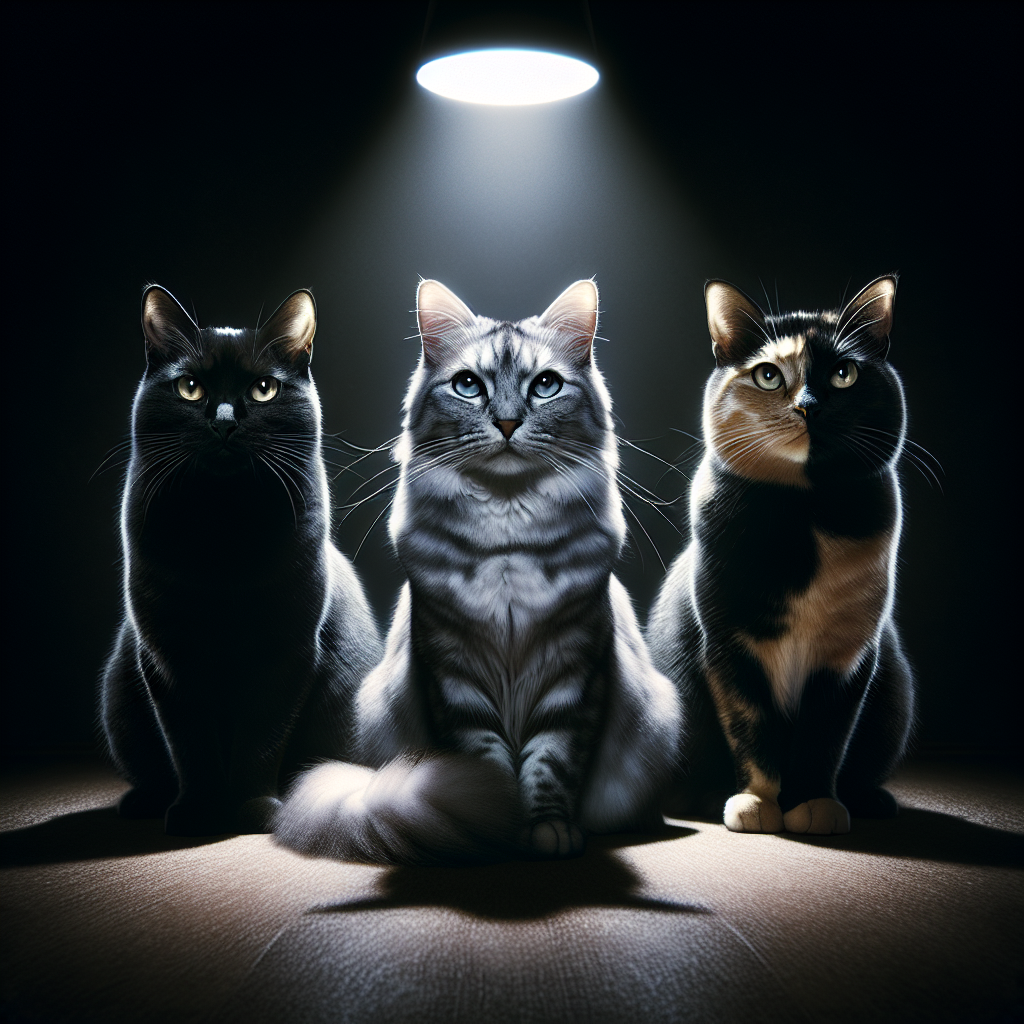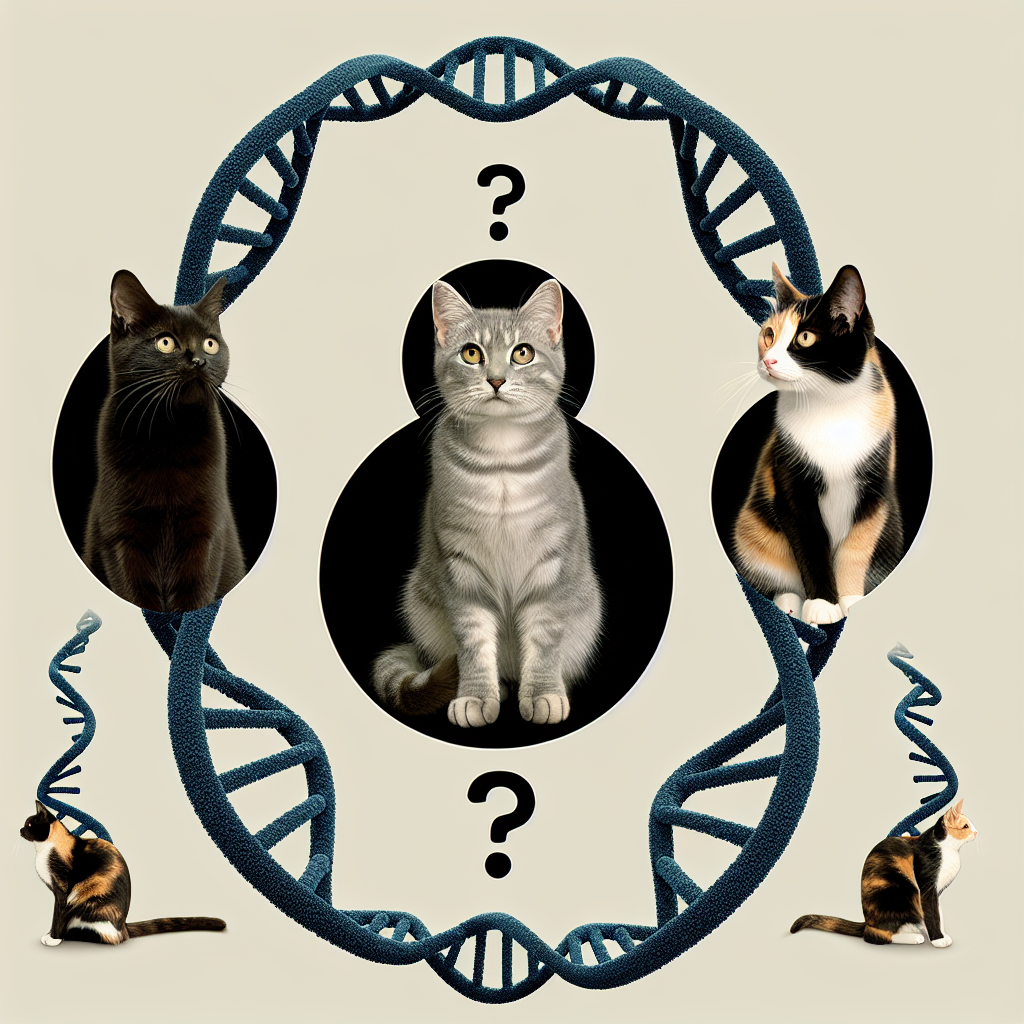Have you ever wondered if a grey tabby cat is a result of a unique blend between a black cat and a calico cat? The answer to this intriguing question may surprise you. In this article, we will explore the origins and characteristics of grey tabby cats, shedding light on whether they are truly a mixture of these feline colors or if there’s something more to their captivating appearance. So, grab a cup of tea, sit back, and let’s embark on a delightful journey of discovery into the enchanting world of grey tabby cats.
What is a Grey Tabby?
Definition of a Grey Tabby
A Grey Tabby is a popular and charming cat breed known for its unique coat pattern. These felines have a coat that is predominantly grey, with stripes and whorls of darker and lighter shades interwoven throughout. Grey Tabbies can come in various shades of grey, from a light smoky grey to a deep charcoal hue. They are often admired for their strikingly beautiful fur and captivating green or amber eyes.
Physical Characteristics of a Grey Tabby
In addition to their captivating coat, Grey Tabbies have distinctive physical characteristics that set them apart from other cat breeds. They typically have medium-sized, muscular bodies with a dense and soft coat. Their ears are slightly rounded and often adorned with a tuft of hair at the tips. Grey Tabbies also have strong, agile legs and a long, graceful tail that adds to their overall elegance. One interesting feature of Grey Tabbies is their “M” marking on their foreheads, which is a characteristic trait often associated with this breed.
Temperament of a Grey Tabby
Grey Tabbies are renowned for their friendly and sociable nature. They are often described as affectionate, gentle, and intelligent companions, making them a popular choice for families and individuals alike. These cats typically enjoy human interaction and are known to form strong bonds with their owners. Grey Tabbies are often playful and curious, eagerly exploring their surroundings and engaging in interactive play sessions. They are usually good with children and other pets, making them a wonderful addition to a household seeking a loving and adaptable feline friend.
Understanding Cat Coat Colors
Explanation of Cat Coat Colors
Cat coat colors are determined by several factors, including genetic variations and the presence of different pigments in their fur. The wide array of coat colors and patterns in cats is a result of centuries of selective breeding and natural genetic variations. These variations can produce a plethora of colors, including solid colors, tabby patterns, tortoiseshell, calico, and more. Understanding the different coat colors allows us to appreciate the incredible diversity within the feline world.
Genetics of Cat Coat Colors
The genetics behind cat coat colors are complex and fascinating. Coat color is determined by specific genes that control the production and distribution of pigments in the fur. The two primary pigments responsible for most coat colors in cats are eumelanin (black pigment) and pheomelanin (red pigment). Various genetic combinations and interactions determine the presence or absence of these pigments, resulting in the vast range of coat colors observed in different cat breeds.

Differentiating Black Cats and Calico Cats
Definition and Characteristics of a Black Cat
Black cats, as the name suggests, have a solid black coat without any markings or patterns. They are often associated with mystery and superstition, which has unfortunately led to some unfounded myths and misconceptions surrounding them. In reality, black cats are no different from any other cat breed in terms of temperament or behavior. They can vary in size, personality, and characteristics, just like any other feline companion.
Definition and Characteristics of a Calico Cat
On the other end of the spectrum, calico cats are known for their beautiful and distinctive tricolor coat pattern. Calico cats have patches of white, orange, and black fur, creating a striking mosaic effect. These patches can be distributed randomly on their bodies, with no two calico cats having the exact same pattern. Calico cats are predominantly female, although rare male calicos do exist. Their unique coat pattern and vibrant colors make them a sought-after and visually arresting feline companion.
What Makes a Grey Tabby?
Grey Tabby Coat Color
Contrary to popular belief, a Grey Tabby is not a direct mix of a black cat and a calico cat. Instead, their coat color arises from a distinct genetic combination that results in the grey and tabby pattern we recognize. While the exact mechanism is complex, grey tabbies inherit specific genes that influence the production and distribution of pigments in their fur, leading to the characteristic grey color. Their tabby pattern, which includes the stripes and whorls, is a result of other genetic factors interacting with the base grey color.
Potential Genetic Combinations for a Grey Tabby
Grey tabbies can have a variety of genetic combinations that contribute to their unique coat color. The specific genes involved in producing the grey and tabby pattern can vary from cat to cat. For example, genes such as the agouti gene determine the distribution of pigments within the hair shaft, resulting in the distinct tabby markings. Other genes, such as the dilution gene, influence the intensity and shade of the grey color, giving rise to a range of grey tabby variations. These genetic combinations contribute to the beautiful diversity seen among Grey Tabbies.

Genetic Possibilities of a Grey Tabby
Understanding Dominant and Recessive Genes
To understand the genetic possibilities of a Grey Tabby, it is essential to comprehend the concept of dominant and recessive genes. Dominant genes are those that only require one copy to be expressed in the cat’s appearance, while recessive genes require two copies to show their effect. In the case of Grey Tabbies, the presence of the grey and tabby pattern is typically governed by a combination of dominant and recessive genes, resulting in a range of possible variations.
Possible Genetic Combinations for a Grey Tabby
Grey Tabbies can have various genetic combinations that lead to their unique coat color. For instance, a Grey Tabby may inherit the dominant tabby gene from one parent and the recessive grey gene from the other, resulting in a classic grey tabby pattern. Alternatively, a Grey Tabby may inherit both the dominant tabby gene and the dominant grey gene, resulting in a darker or more intense grey coat. The specific genetic combinations responsible for a Grey Tabby’s appearance can vary, adding to the individuality and charm of these felines.
Common Misconceptions about Grey Tabbies
Grey Tabby Not Necessarily a Mix of a Black Cat and Calico Cat
Contrary to a common misconception, Grey Tabbies are not a direct mix of a black cat and a calico cat. The grey color and tabby pattern in Grey Tabbies are produced through distinct genetic combinations, involving various genes responsible for pigmentation and patterning. While the tabby pattern may include stripes similar to those seen in some black cats and the grey color somewhat resembles the hues seen in calico cats, Grey Tabbies have their own unique genetic makeup that sets them apart from both black cats and calico cats.
Other Possible Genetic Combinations for Grey Tabbies
In addition to the genetic combinations mentioned earlier, there are other possibilities that can contribute to the coat color of Grey Tabbies. Genes responsible for dilution or shading can influence the grey color, resulting in variations ranging from a light silver to a deep charcoal. The presence or absence of certain genes can also determine whether the tabby pattern is more pronounced or less visible in a Grey Tabby’s coat. Each Grey Tabby is a product of its unique genetic makeup, leading to a mesmerizing range of coat colors within the breed.
Factors Influencing Grey Tabby Coat Color
Role of Melanin in Coat Color
Melanin, the primary pigment responsible for coat color in cats, plays a crucial role in determining the grey tabby coat color. Eumelanin, in particular, is responsible for the black and brown coloration within the fur. Depending on the genetic variations and interactions involved, different amounts and distributions of eumelanin can result in the various shades of grey seen in Grey Tabbies. The production and distribution of melanin within the hair shaft contribute to the unique and captivating coat color of Grey Tabbies.
Effects of Other Genes on Grey Tabby Coat Color
In addition to melanin, other genes can affect the coat color of Grey Tabbies. The interaction between the agouti gene and melanin distribution determines the tabby pattern, with the allele responsible for tabby striping producing a pattern of contrasting dark and light bands. Other genes, such as those involved in dilution or shading, can modify the intensity of the grey color within the coat. These genetic factors work together to create the beautiful and diverse range of coat colors observed in Grey Tabbies.
Breed-specific Grey Tabbies
Breed Standards for Grey Tabbies
While Grey Tabbies are not limited to a specific breed, there are breed standards established for various cat breeds that produce Grey Tabbies. For example, the American Shorthair breed recognizes a grey tabby color as part of its breed standard. Similarly, the British Shorthair, Maine Coon, and Abyssinian breeds may also produce Grey Tabbies as per their respective breed standards. Understanding the breed standards allows potential cat owners to better identify and appreciate Grey Tabbies within specific breeds.
Breeds Known to Produce Grey Tabbies
In addition to breed standards, some specific cat breeds are more commonly associated with producing Grey Tabbies. The British Shorthair, famous for its round face and dense coat, often produces stunning grey tabby variations. Maine Coon cats, known for their large size and tufted ears, can also produce Grey Tabbies with their characteristic tabby markings. Additionally, Abyssinian cats, with their sleek and ticked coat pattern, can display a striking variation of Grey Tabbies. These breeds, among others, are known for producing Grey Tabbies with their unique breed characteristics.
Adopting a Grey Tabby
Finding Grey Tabbies for Adoption
If you have fallen in love with the charm and beauty of Grey Tabbies, adopting one can be an immensely rewarding experience. To find Grey Tabbies available for adoption, you can start by checking local shelters, rescue organizations, and breed-specific rescues. Many Grey Tabbies, including mixed breeds, can be found in these shelters waiting for their forever homes. Additionally, reaching out to reputable breeders specializing in Grey Tabbies can also be an option if you’re specifically interested in a particular breed that produces Grey Tabbies. Remember, adopting a Grey Tabby provides a loving and deserving feline companion with a second chance in life.
Considerations for Grey Tabby Owners
As responsible Grey Tabby owners, there are a few important considerations to keep in mind. First and foremost, providing a safe and stimulating environment for your Grey Tabby is crucial. They thrive on mental and physical stimulation, so providing interactive toys, scratching posts, and playtime can help keep them happy and entertained. Regular grooming is also essential to maintain the beauty and health of their coat. Furthermore, a balanced and nutritious diet, regular veterinary care, and plenty of love and affection are key to ensuring that your Grey Tabby lives a long, healthy, and fulfilling life.
Conclusion
Summary of Grey Tabby Origins
In conclusion, a Grey Tabby is not simply a mix of a black cat and a calico cat, as commonly believed. Grey Tabbies have their own unique genetic combinations that result in their stunning grey coat and distinctive tabby pattern. These felines possess a wide range of genetic possibilities that contribute to the beauty and diversity seen within the breed. Understanding the role of genetics, pigmentation, and coat patterns helps us appreciate and embrace the unique characteristics of Grey Tabbies.
Appreciating the Beauty of Grey Tabbies
Grey Tabbies are truly remarkable feline companions that deserve admiration for their striking appearance and wonderful personalities. The combination of their gentle temperament, captivating grey coat, and enchanting tabby markings make them a beloved choice among cat enthusiasts. Whether you adopt a Grey Tabby from a shelter or bring one into your home through a reputable breeder, you are sure to experience the joy and love that these amazing felines bring. Embrace the beauty of Grey Tabbies and cherish the special bond that can be formed with these incredible companions.

